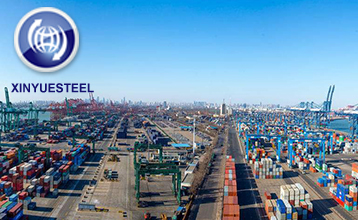Coal prices rise in the early autumn and late summer
Sep. 10, 2020
Coal prices rise in the early autumn and late summer. What do you think of the market this week?
The coal market, which had been calm for a month, was turbulent again. At the beginning of autumn and the end of summer, coal prices at the port rose unexpectedly.
Analyzing the market operation throughout the summer, it can be called a twists and turns. In July, the port coal price showed a trend of rising first, then falling, and then flat. At the beginning of this month, as the main coal mines raised the long-term association price and announced the temporary suspension of the supply of spot coal, this stimulated the market, and the coal price rose from 573 yuan/ton to 597 yuan/ton. After coal prices approached the red zone, regulatory risks increased, coupled with rising power plant inventories and increased wait-and-see sentiment, coal prices continued to fall by 24 yuan/ton to 573 yuan/ton, returning to the starting point at the beginning of the month. At the end of the month, affected by the upside down of coal prices, traders were less motivated to ship goods, and there were fewer terminal inquiries and purchases, and coal prices were flat.
Entering August, under the background of high inventories and full hydropower, downstream users are not in a hurry to pull the goods. There are few anchored ships in Bohai Rim ports, and power plants are actively consuming their own high inventories. Changxie coal has become the focus of pulling transportation. Traders have failed to raise prices and are in decline. The price of coal dropped from RMB 573/ton at the beginning of the month to RMB 552/ton at the end of the month, a drop of RMB 21/ton.

Entering September, coal prices in the port market finally ushered in a belated increase. The reasons are as follows: First, the northeast region has opened a winter storage model to divert high-quality resources. Under the price guidance, the main production areas and direct power supply of coal have increased. The amount of coal in the water dropped, and the number of coal trucks entering the Bohai Sea port decreased. Secondly, affected by safety inspections and coal management ticket restrictions, coal prices in the main producing areas are generally stable but strong, and the supply of low-sulfur high-quality coal has been tight, driving spot prices to stay firm. Thirdly, due to severe weather and two failures of major transportation lines, the replenishment of coal in northern ports has been slow. In particular, the inventory of Qin Port and SDIC Jingtang Port has decreased significantly, and the phenomenon of ships and other cargoes has appeared, and the decline in port inventory has also directly supported the decline. The mentality of traders. Fourth, the main thermal coal futures contract is constantly looking for upward breakthroughs. After closing at the Yangxian line for four consecutive days, it once approached 580 yuan/ton, and the market was bullish. The northern ports are relatively inadequate with high-quality resources for arrivals, and demand for spot purchases has increased, which has pushed coal prices upward. Some high-quality low-sulfur coal types have been quoted with an index of 5-15 yuan/ton.
Judging from the number of anchored ships in northern ports, it is at a low median level. With the fall of the high temperature weather, the demand for electricity for refrigeration by residents has weakened, but the demand for coal in the infrastructure and chemical industries increased in September, and downstream non-electricity companies have been actively stocking up. Since the end of last week (September 5), Qingang has completed procedures for shipping The proportion increased. This week, coal prices will mainly fluctuate or increase slightly, and the increase will not be very large. The real increase should be in mid-to-late September.



